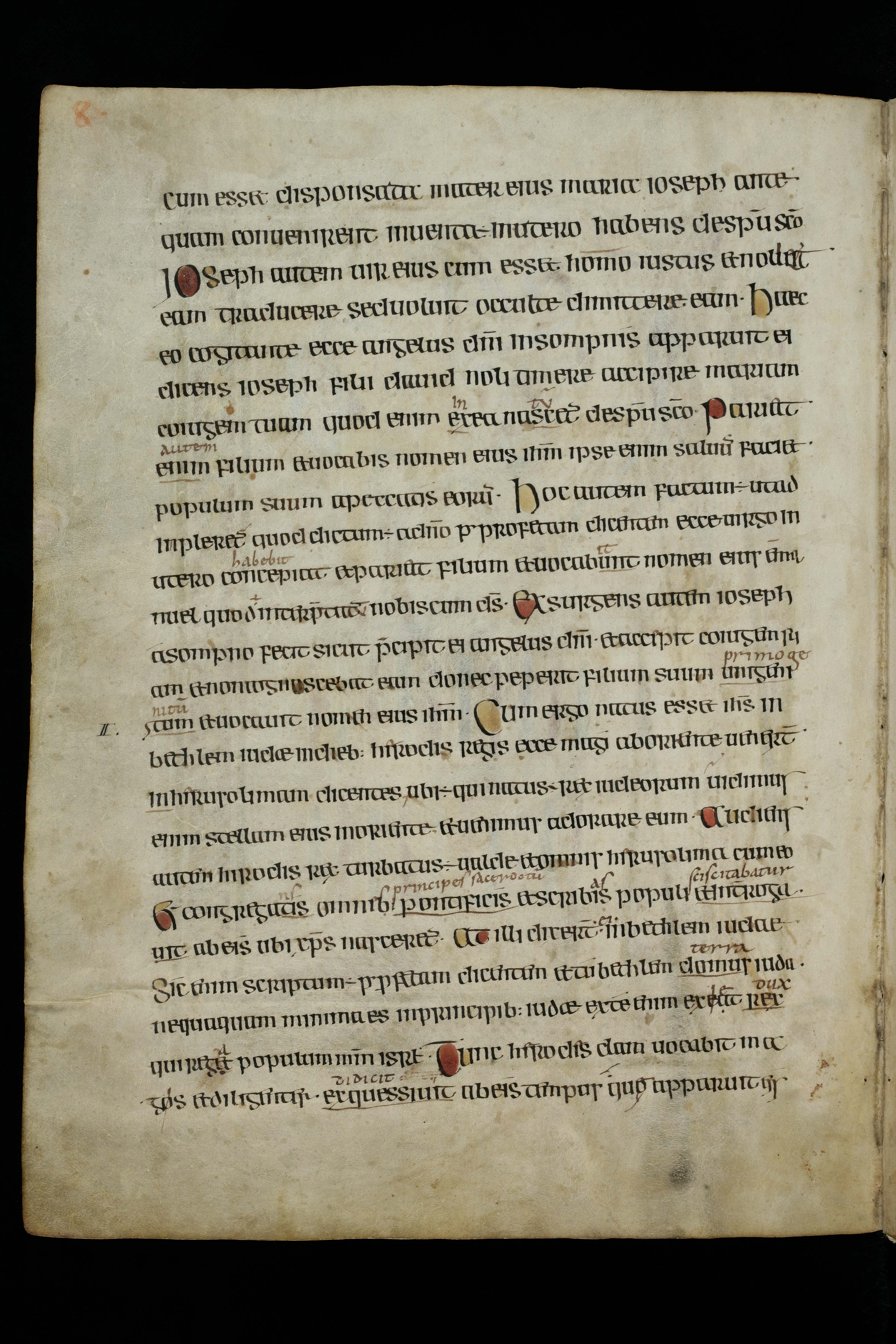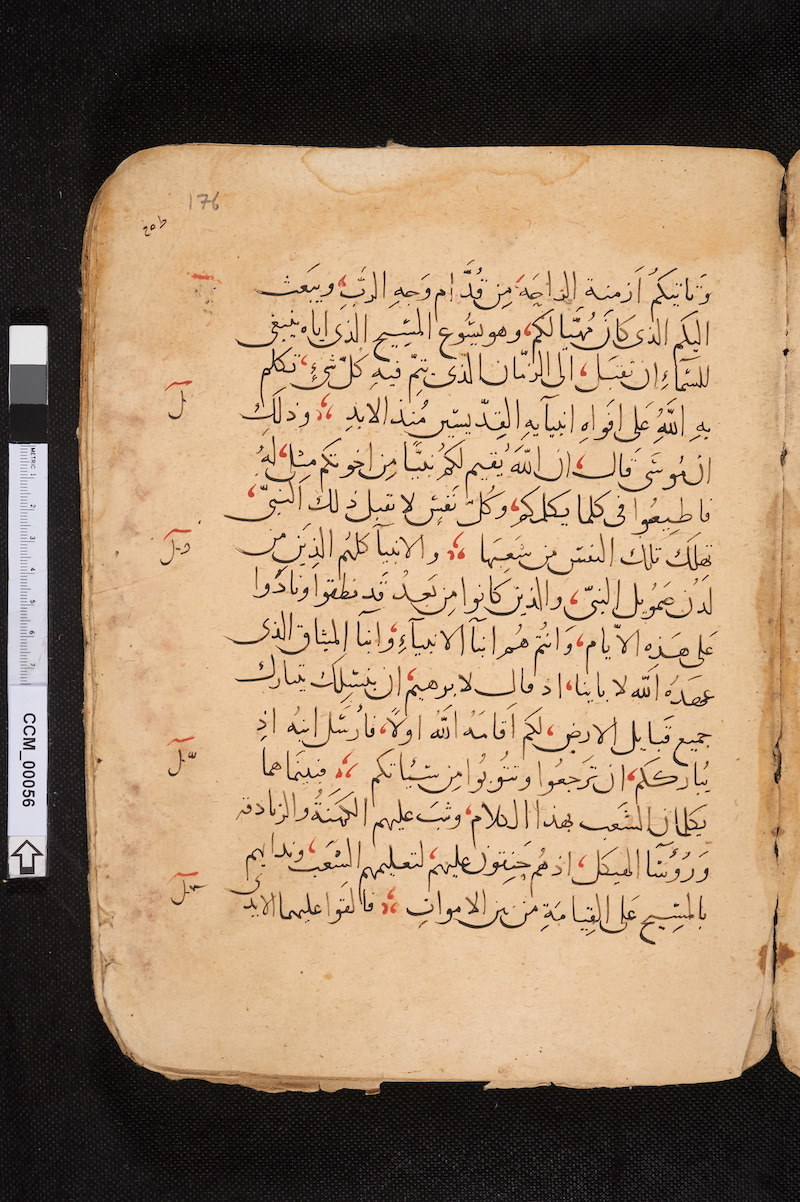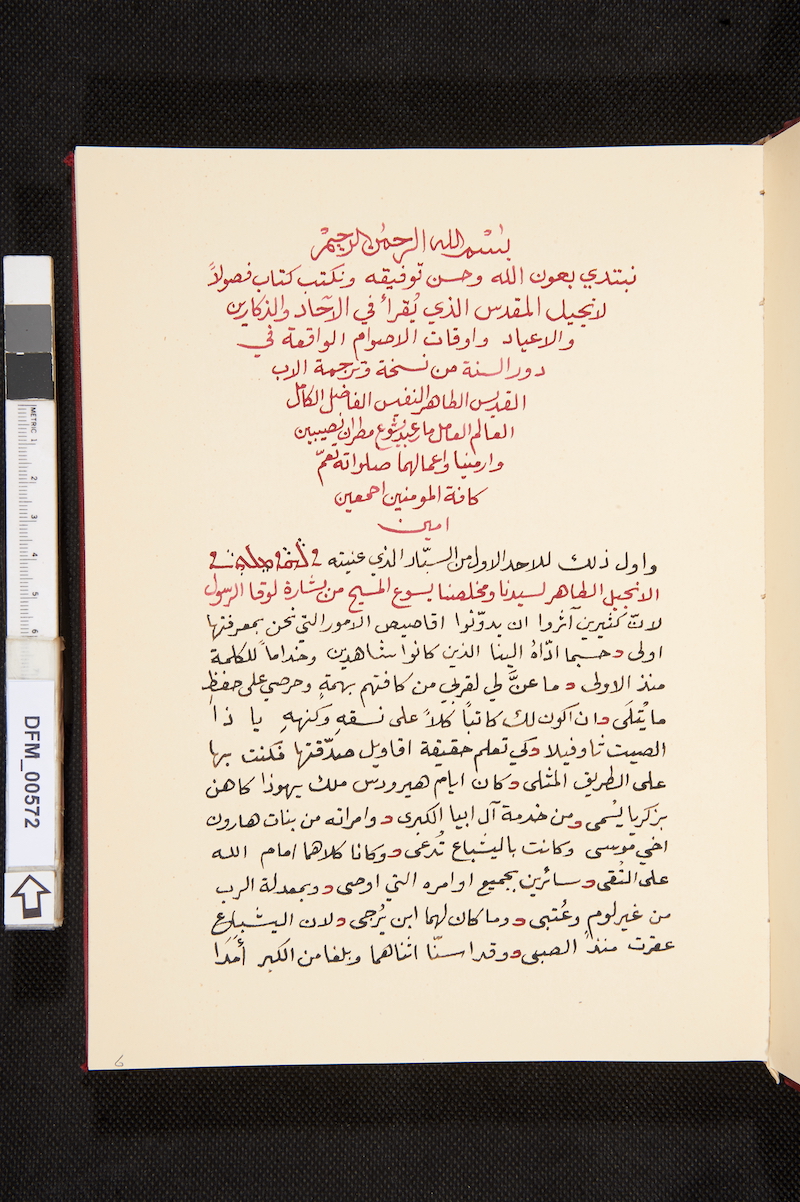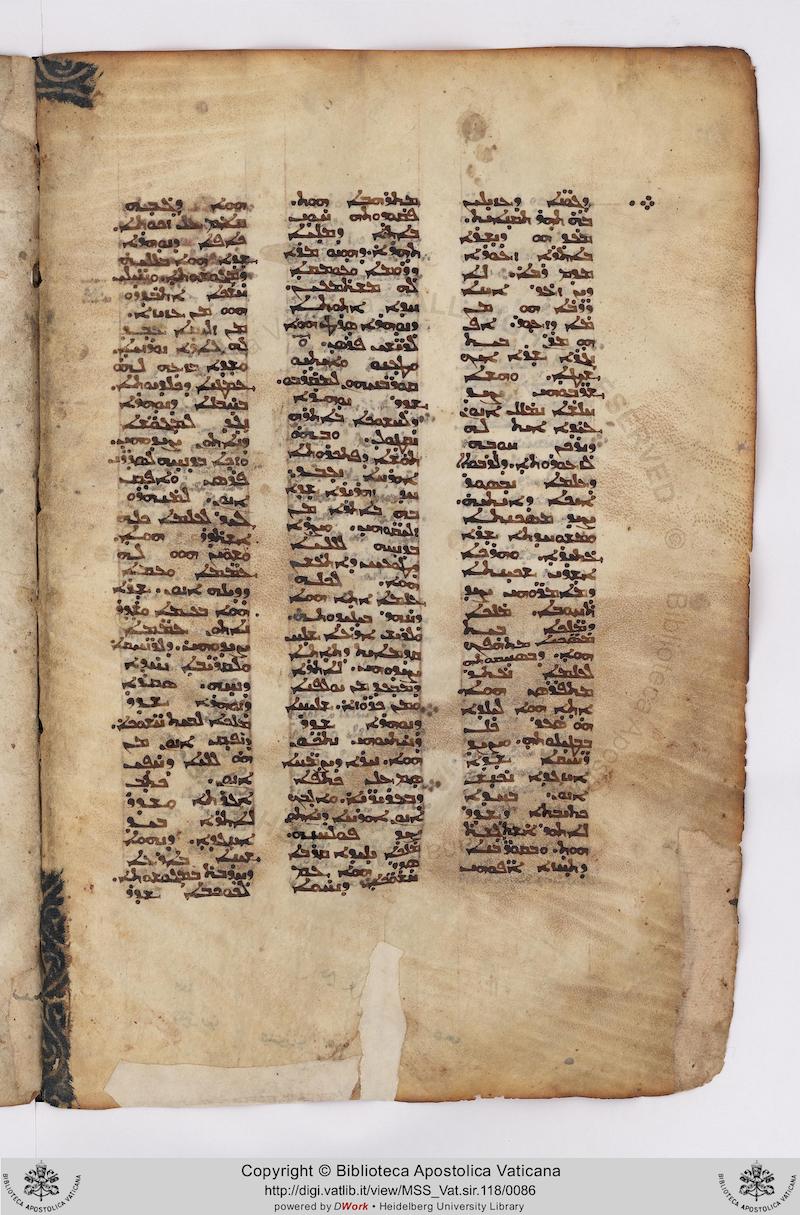
Insular Half-Uncial, 8th century
-
Title
Gospels -
Text
Matthew 1:18-2:7 -
Language(s)
Latin -
Writing System
Roman -
Script(s)
Insular Half-Uncial -
Country
Switzerland -
City
St. Gall -
Repository
Stiftsbibliothek -
Shelf Mark
51, page 8 -
Common Name
St. Gall Gospel Book or Irish Gospel Book of St. Gall -
Century
8th century -
Year Range
700-800 -
Provenance
St. Gall from the 10th century -
Bibliography
Gustav Scherrer, Verzeichniss der Handschriften der Stiftsbibliothek von St. Gallen (1875), 22-23.
-
External Facsimile
The script of this copy of this 8th-century Irish copy of the Gospels is Insular Half-Uncial, which has its origins in the Half-Uncial minuscule script of books imported to Ireland at its conversion to Christianity. In the 7th century, Insular scribes – those in Ireland and in parts of northern England under Irish influence – inflated the minuscule Half-Uncial into a majuscule script. The resulting script uses the letterforms of Half-Uncial, which are the distant ancestors of our modern lower-case alphabet, but makes most of them the same height as each other. Cross-strokes that join letters along the headline and wedge-shaped serifs at the headline help create a strong horizontal emphasis to this script, and reinforce its majuscule character.
Unlike the very round Insular Half-Uncial of the Lindisfarne Gospels (London, British Library, MS Cotton Nero D IV, also in this collection), which was strongly influenced by the aspect of contemporary Uncial script, this Insular Half-Uncial has a square aspect. Even "round" letters like a, e, d, and q are formed of straight strokes. Letters are taller than they are wide, and long sequences of minims can be hard to sort into separate letters because of the lateral compression of the script.
The Insular f with hasta at the baseline and the Insular g, an open, s-like curve with a flat cross-stroke at the headline, link this script to the Insular minuscules. Among the few abbreviations used here is the Insular symbols ÷ for est and p with a tag at the right top of its bow for per. The scribe also uses some characteristically Irish Latin spellings, such as i for e and ss for s.
The text is laid out in long lines with good word separation. Color-washed initials mark the beginnings of verses. Irish diminuendo – starting a portion of text with a larger letter and gradually easing into the average letter-height for the line – reinforces the divisions of the text.
The Gospel texts in this manuscript are a mix of Old Latin and Vulgate readings, with a preponderance of the former. The Jerome's Vulgate translation of the Bible was significantly slower to take hold in Ireland than in England or on the Continent. A later hand, writing in Caroline minuscule, has entered numerous variant readings to bring the text in line with the Vulgate, as well as spelling corrections and additional punctuation.
St. Gall Codex 51 is notable for its full-page illustrations, including decorated text pages and evangelist portraits. Be sure to visit the complete digitized manuscript at e-codices to see them all.
Acknowledgements: Described by Carin Ruff
Transcription
(Excludes later corrections and additions.)
1 cum esset disponsata mater eius maria ioseph ante(-)
2 quam conuenirent inuenta (est) in utero habens de sp(irit)u s(an)c(t)o
3 JOSeph autem uir eius cum esset homo iustus et noluit
4 eam traducere sed uoluit occulte dimittere eam∙ Haec
5 eo cogitante ecce angelus d(omi)ni in sompnis apparuit ei
6 dicens ioseph filii dauid noli timere accipire mariam
7 coiugem tuam quod enim ex ea nascet(ur) de sp(irit)u s(an)c(t)o∙ PARiat
8 enim filium et uocabis nomen eius ie(su)m ipse enim saluu(m) faciet∙
9 populum suum a peccatis eoru(m)∙ Hoc autem factum (est) ut ad(-)
10 inpleret(ur) quod dictum (est) a d(omi)no p(er) profetam dicentem ecce uirgo in
11 utero concepiat et pariat filium et uocabunt nomen eius ema(-)
12 nuel quod interp(re)tat(ur) nobiscum d(eu)s∙ EXSurgens autem ioseph
13 a sompno fecit sicut p(re)cipit ei angelus d(omi)ni∙ et accipit coiugem su(-)
14 am et non cognoscebat eam donec peperit filium suum unigeni(-)
15 tum et uocauit nomen eius ie(su)m∙ CUm ergo natus esset ie(su)s in
16 bethlem iudæ in dieb(us) hirodis regis ecce magi ab oriente uener(un)t
17 in hirusolimam dicentes ubi (est) qui natus (est) rex iudeorum uidimus
18 enim stellam eius in oriente et uenimus adorare eum∙ AUdiens
19 autem hirodis rex turbatus (est) ualde et omnis hirusolima cum eo
20 Et congregatis omnib(us) pontificis et scribis populi et int(er)oga(-)
21 uit ab eis ubi chr(istu)s nasceret(ur)∙ AT illi dicer(en)t in bethlem iudae
22 Sic enim scriptum (est) p(er) p(ro)fetam dicentem et tu bethlem domus iuda
23 nequaquam minima es in principib(us) iudæ ex te enim exeat rex
24 qui reget populum m(eu)m isr(ae)l∙ TUnc hirodis clam uocabit ma(-)
25 gos et diligenter exquessiuit ab eis tempus quo apparuit eis
Paleographic Features
1. The letter that begins the third word on the page is a d. It looks a lot like cl, but compare the actual cl in clam in the second to last line.
2. JOSeph at the beginning of line 3 illustrates diminuendo: the letters at the beginning of a verse gradually get smaller till they reach the normal letter size for the line.
3. At the end of line 7, the original scribe wrote pariat: the last two letters, the a and t, can be hard to parse because the a is closed by a flat stroke across the top that connects to the cross-stroke of t. The later corrector has corrected the a to an e, both here and in many other places on the page.
4. Line 10 contains two distinctive Insular abbreviations: the Insular abbreviation for est, which looks like a division sign, and the Insular abbreviation for per, which looks like a p with a little hook hanging off its bow.
5. In accipit (line 13, the third word from the end of the line), as elsewhere, the original scribe wrote an i where the word should have an e – a Hiberno-Latin spelling habit. The later corrector transformed the i to an e. Another example is in the second line from the bottom, where the original scribe routinely wrote hirodis instead of herodes for Herod's name. The corrector again changes the is to es.
6. In the bottom line, note that the original hand has two forms of e: a tall one that reaches above minim height, with its hasta in ligature with the following letter, and a squarer, mimim-height version.
7. In quessiuit in the bottom line, the scribe wrote two ss where the Latin spelling requires only one – another Irish Latin spelling habit.



